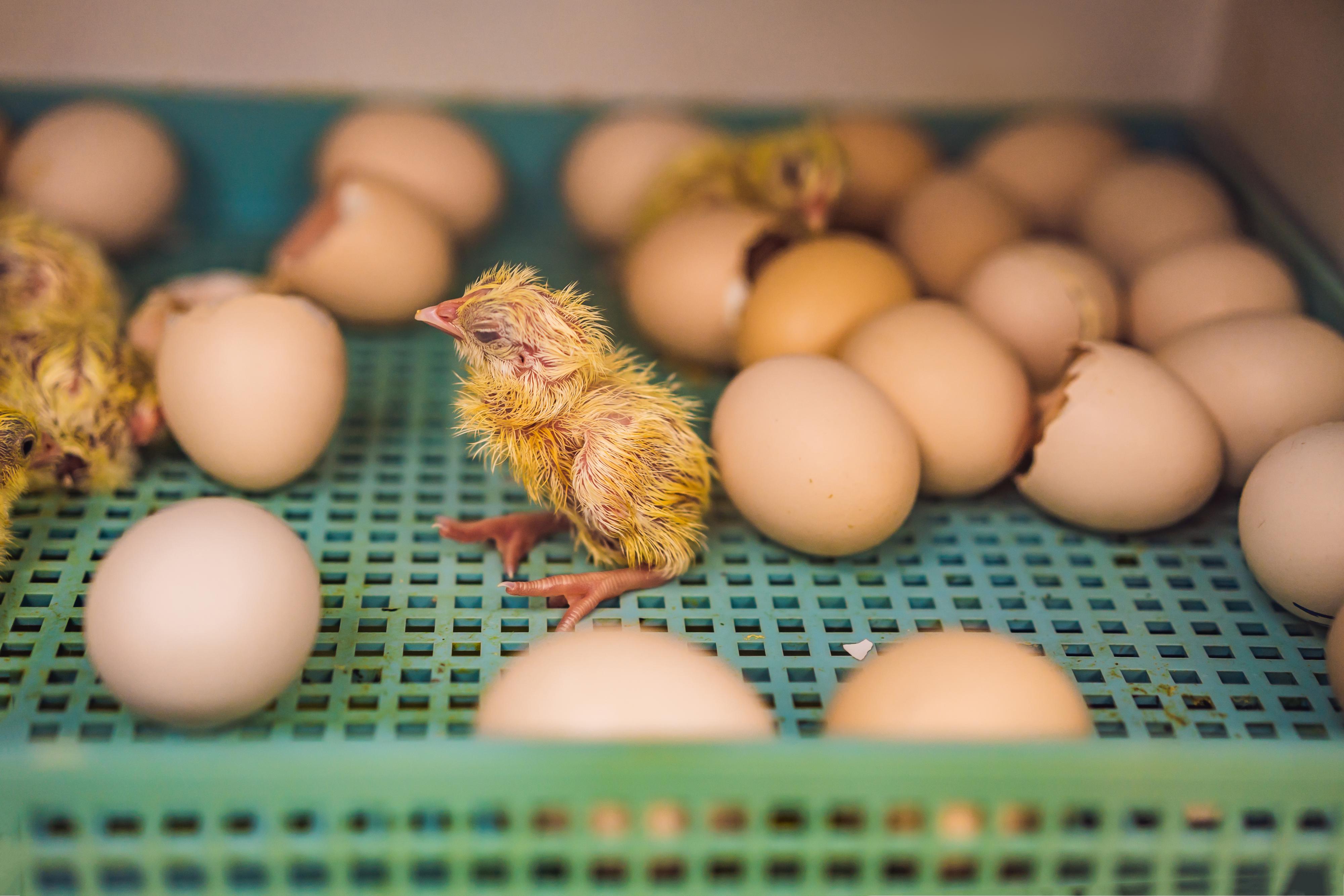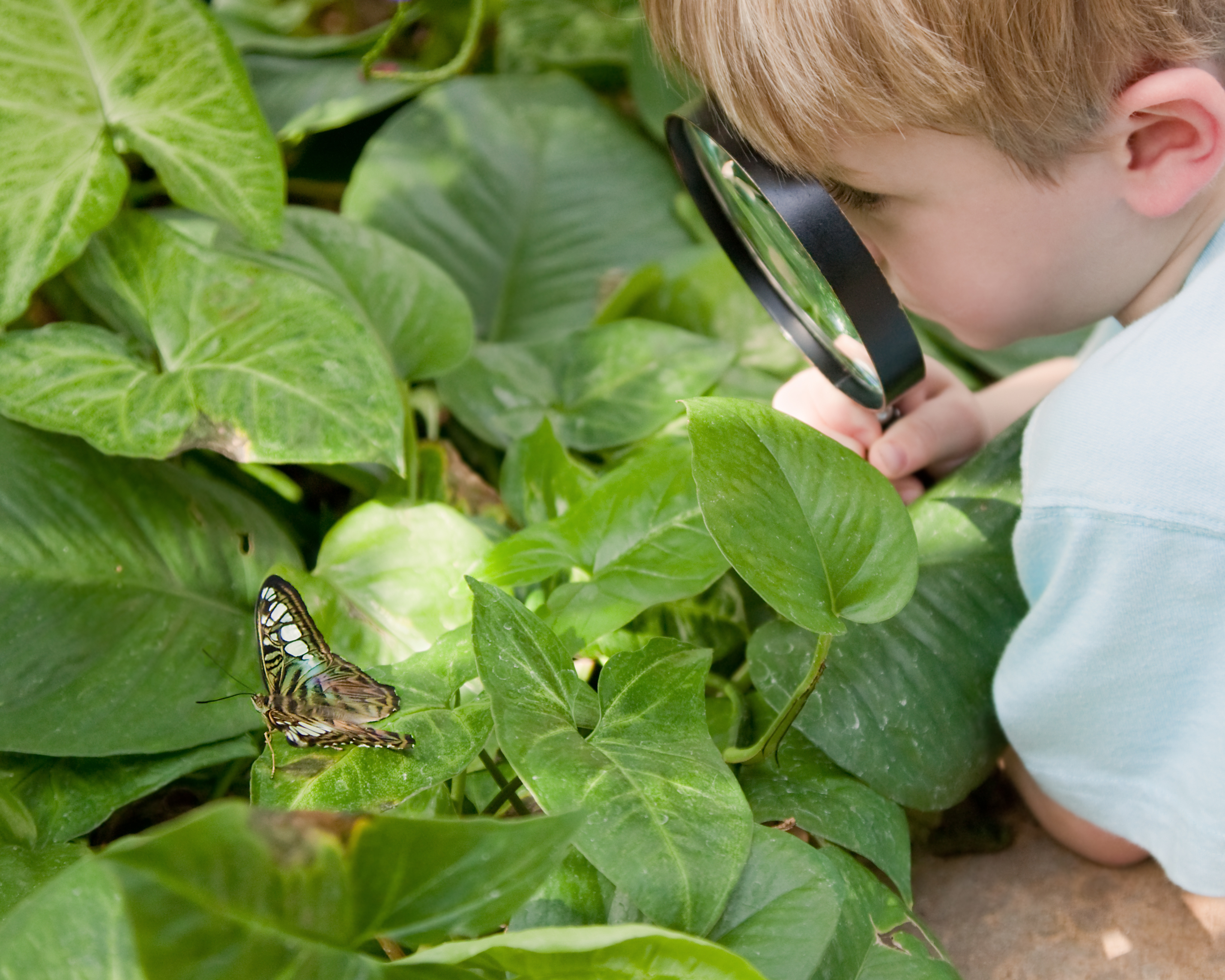Beyond Classroom Pets: Innovative Ways to Connect Young Children with Animals

You are here
It’s circle time, and Mr. Gonzalez is introducing his preschool class to a unit on bees. As he shows a photo of a big, fuzzy bumblebee, a river of facts and opinions spills out of the children. Everyone has seen a bee before, and everyone is curious to learn more about these small, important animals.
Over the next four weeks, Mr. Gonzalez’s preschoolers explore bee anatomy, types of bees and their homes, bees’ role in pollination, and the way they communicate through dancing. Indoor and outdoor reading, writing, math, and science activities fuel long conversations about vocabulary words like wing, antennae, hive, and waggle. As a final part of their investigation, the children make a video sharing their new knowledge with friends and family. Most profoundly, they are beginning to understand why humans need to share the world with animals like bees and respect their needs so that everything on the earth can thrive.
Most early childhood classrooms heavily feature animals, from topics or themes of study to storybooks to decorations on the walls. One popular way of bringing animals into a preschool setting is through a classroom pet that children observe and help care for. Classroom pets are generally small animals that can survive in a small cage and eat easy, inexpensive diets. They tend to be fairly quiet, nondisruptive, and nondistracting. Popular pets include rodents, lizards, fish, amphibians, turtles, and tortoises.
In theory, classroom pets help children learn about animal care, bond to that creature or species, and become aware of broader environmental issues. They also can serve as a springboard for meaningful learning activities, such as journaling about the pet’s adventures, engaging with informational texts, and measuring and recording the pet’s food and water. Yet in reality, having a classroom pet often does not work out this way. During decades of work in early childhood settings, I often have witnessed sad situations in which classroom pets did not survive or thrive, despite the teachers’ and children’s best efforts. Additionally, they did not drive exciting instruction in the ways that teachers had hoped.
As seen in the opening vignette, early childhood educators can introduce animals into their settings in more effective, engaging ways. In this article, I explain some of the challenges with classroom pets, then offer alternative, unit-focused approaches that are better for animals, early childhood educators, and children.
The Challenges of Classroom Pets
While the idea of a classroom pet sparks excitement, keeping these animals in early learning programs and schools can pose several challenges for teachers and the animals themselves.
Longevity
Most classroom pets can live far longer than one school year. For example, small rodents such as mice, gerbils, and hamsters can live at least two years, while rabbits can live at least eight years. Common goldfish can live 10 years, and tortoises can live an astounding 40 years or more. This longevity means that teachers need to plan healthy places for the pet to spend many holiday and summer breaks. Families who volunteer to host the pet may not know how to take care of it appropriately or have the right environment set up. Teachers may not be prepared to accommodate the animal in their own homes.
Expense
Costs for food, housing and bedding, and toys mount over time. Most of these animals need an annual trip to the veterinarian to make sure they stay healthy, and as they age, they may need treatment for chronic issues (arthritis, vision loss). Costs can easily exceed $500 per year, and teachers are generally responsible for covering these expenses.
Loss of Interest
As time passes, children often become less interested in the classroom pet. Unlike household pets like cats and dogs, most classroom pets cannot be easily, safely handled by preschool-aged children. Consequently, children mostly observe the pets through their cages, and the pet’s behavior is likely to be the same from day to day. As children lose interest, the opportunity for inspiring curricular activities fades as well.
Decreased Quality of Life for the Animal
Perhaps most important to consider is animal well-being. Scientists cannot tell us exactly what makes a good quality of life for most of the animals commonly found as classroom pets. However, in nature, none of these animals lives in one very small area, enclosed for their entire lives. Instead, they move freely throughout their habitat, and some (frogs, turtles) spend time on land and in open water. Many classroom pets, particularly smaller animals, are also highly sensitive to light and sound and may find bright, loud preschool classrooms stressful. Moreover, teachers cannot use classroom pets to teach children about how these animals live in nature. For example, it is difficult to explain how far tortoises can roam (up to half a mile per day) when your classroom tortoise is confined to a small terrarium, perhaps for four decades or more.
Innovative Ways to Bring Animals into Preschool Settings
Rather than relying on classroom pets, teachers can plan animal-themed projects and studies with brief animal interactions. Not only is this more humane, it can also be a more educational and engaging approach. (See “Questions to Ask Before Connecting Children with Animals” below for additional considerations.) The following four suggestions can be used independently or in combination throughout the preschool year.
Zoo and/or Rescue Visit
Many American Zoo Association-accredited zoos welcome visitors or will come to your classroom to share child-friendly “ambassador” animals—a term the organization uses for animals that like being around people. These include owls, rats, hedgehogs, armadillos, bearded dragon lizards, and tortoises. Local refuges for specific species (guinea pigs, reptiles, or wild birds) are also good candidates for classroom visits. Experts from either of these venues will be able to share animals that are comfortable with children, give helpful information about them, then take them back to their appropriate housing. In my experience, a 30- to 60-minute session with the animal works well.
Cost: Varies
Considerations: Zoos and rescue organizations may not have experience with preschoolers, so a brief planning conversation with the presenter or handler can help ensure that the presentation will engage children. (For more information on planning and preparing for experiential learning, see “Embracing Partnerships with Informal Settings to Enhance Teaching and Learning,” by Sara L. Hartman and Jennifer Hines-Bergmeier, in the Summer 2021 issue of Young Children.)
Extension activities: A zoo or refuge visit invites classroom discussion of key concepts like animal care and safety, eating habits, and environmental adaptations. Useful books to pair with animal visits might include A Visit to the Zoo, by Blake A. Hoena, or The View at the Zoo, by Kathleen Long Bostrom and illustrated by Guy Francis. Dramatic play activities could include transforming areas of the classroom into different parts of the zoo or refuge and pretending to care for the animals that reside there.

Hatching Chicks
In the span of a few weeks, teachers can introduce children to a baby chick’s lifecycle. Teachers can purchase six to 12 chicken eggs and rent or purchase an incubator (for eggs) and a brooder (for chicks). Local farms, farm stores, and online companies (e.g., RentACoop.com) offer these supplies. After about three weeks in the incubator, the eggs will hatch. Children can then watch as the chicks move to the brooder and start to grow.
Cost: $10 to $50 for eggs and shipping; $50 to $100 for the incubator; $50 to $100 for the brooder, which can be reused.
Considerations: Eggs and chicks can carry salmonella and/or E. coli, which means teachers must wear gloves during any interactions and wash their hands thoroughly afterward. The Centers for Disease Control and Prevention recommends children not handle the chicks (see cdc.gov/healthypets/pets/farm-animals/backyard-poultry.html). Also, teachers need to identify safe, chicken-friendly homes to adopt each chick. In many cases, classroom chicks cannot go back to live on their original farms because of the risk of infecting other animals. Teachers should ask chick providers what will happen to the chicks if they are returned.
Extension activities: A chick study introduces children to concepts such as eggs, embryonic development, and hatching. From Egg to Chicken, by Gerald Legg, and Chick (See How They Grow Series), by Jane Burton, can help support this learning. Corresponding math and language activities could include describing, counting, and charting the number of eggs, the length of time each takes to hatch, and the appearance and behavior of the chicks once they emerge.

Nurturing Butterflies
In the spring, classrooms can host caterpillars as they transform into butterflies. Several companies offer caterpillars, food, and housing to curious classrooms (e.g., www.insectlore.com). After ordering, caterpillars arrive in a small cup full of food. Teachers and children keep the caterpillars in their food container until they create chrysalises, then transfer the chrysalises into a netted butterfly house. After the transformation from chrysalis to butterfly is complete, children can set the butterflies free. This activity takes approximately two weeks.
Cost: Initial outlay of $35. This includes $20 for the butterfly house, which can be used year after year, and $15 for the caterpillars.
Considerations: Different kinds of butterflies thrive in different locations. Ask the company you purchase from about selecting a breed that will thrive in your area.
Extension activities: Key concepts include metamorphosis, insect anatomy, and pollination. Helpful books to extend learning might include From Caterpillar to Butterfly, by Deborah Heiligman and illustrated by Bari Weissman, or the classic The Very Hungry Caterpillar, by Eric Carle. (Carle uses the word cocoon, which teachers might want to substitute with chrysalis). Science- and literacy-based activities could include asking children to journal (write and draw) their observations at each stage of the butterfly life cycle.
Studying Bees
From early spring through early fall (when bees are most active), teachers like Mr. Gonzalez from the opening vignette can guide children in spotting bees outdoors and observing their behavior from a distance. Bee safety is a key part of this conversation: it’s important to teach children to respect bees and their fierce self-defense capabilities. Teachers can also take children to visit a local honeybee-keeper’s hive. An excellent source for locating beekeepers is the American Beekeeping Federation (abfnet.org). Finally, in early fall, teachers can introduce children to the nonstinging mason bees, which build nests instead of hives.
Cost: $20 if teachers wish to buy a Mason Bee House, which attracts mason bees and gives them a place to lay eggs.
Considerations: Observing bees in the environment is unwise if children have bee allergies.
Extension activities: Key concepts of a bee study include bee anatomy, eusocial behavior, and honey production. National Geographic Readers: Bees, by Laura Marsh, is a comprehensive informational text about these insects, while The Honeybee, by Kirsten Hall and illustrated by Isabelle Arsenault, includes simpler text in a more narrative form. Science and movement activities could include drawing or sculpting bees and diving into the waggle dance that bees use to share information.
Conclusion
A classroom pet may not be an ideal way to bring nature into the classroom because it often involves taking an animal out of nature. Instead, implementing a series of animal-focused themes or projects throughout the year can provide safe, cost-effective, nature-friendly ways for preschoolers to learn how animals truly live and thrive.
Questions to Ask Before Connecting Children and Animals
When planning animal studies and interactions, some helpful questions to consider include
- Which animals are most interesting to you? To children?
- Which animals are you less comfortable focusing on?
- Do any of the children in your class have health concerns (e.g., allergies)?
- What zoo, refuges/rescues, or other animal organizations are located in your community, and what outreach do they offer to educators?
- What main ideas and vocabulary words will you focus on in your animal study?
- How can your animal study complement a larger unit or theme?
Photographs: © Getty Images.
Copyright © 2022 by the National Association for the Education of Young Children. See permissions and reprints online at NAEYC.org/resources/permissions.
Annemarie Hindman is professor of early childhood education and educational psychology at Temple University in Philadelphia, Pennsylvania.
